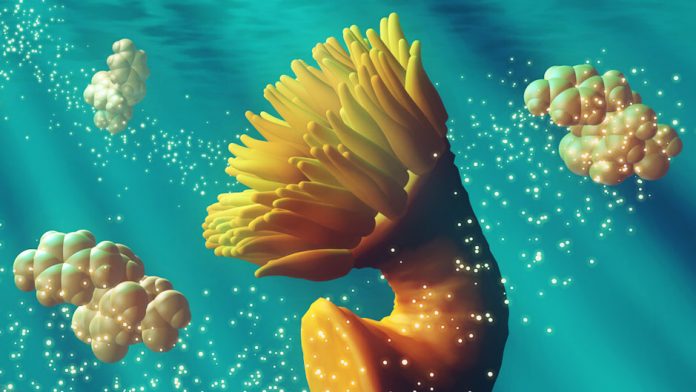When you’re brightly coloured, have no shell, and can’t move, how do you protect yourself? Life under the sea can be hard for a creature like a sea anemone.
Most sea anemones stay rooted to a single location for life, except in rare conditions of starvation or predation. One species of sea anemone, Stomphia coccinea, evolved a swim response to escape a common predator, the starfish Dermasterias imbricata. As the starfish approaches, the anemone responds to chemicals released by its predator by detaching from the sea floor and flexing its body back and forth. This swim response allows the anemone to hover a few inches off the ground for a few minutes, and this is enough to allow the anemone to drift downslope to safety.
Prof. Raymond Andersen, a chemist at the University of British Columbia, was inspired by this response, and he isolated the molecule that triggers it (imbricatine) and discovered that it doubles as a powerful anti-cancer drug. He studies molecules from many underwater sources that seem vulnerable and unmoving, such as sea anemones and sea sponges, to harness the power of their chemical defenses. Using high throughput screening methods, his team rapidly tests dozens of molecules to see whether they might be useful as medicines.
This editorial mock journal cover, illustrated by science animator Karyn Ho, showcases this discovery by re-enacting the hunt that inspired it. Imbricatine is depicted in a trail created by the escaping sea anemone, a usually sedentary creature escaping from a starfish predator.
A sea anemone’s escape from a starfish predator inspires a cancer cure
Illustration courtesy of Karyn Ho
You also can watch this predator/prey interaction unfold in this video.
Biological molecules inspire powerful therapies for the treatment of disease. Researchers commonly look to plants for new medicines. This has left underwater sources are largely unexplored. When patients don’t respond well to plant-based medicines, or when bacteria develop resistance to plant-based antibiotics, looking underwater for new molecules may give new inspiration.
All images under copyright © 2014 by Karyn Ho, all rights reserved. Used with permission. To license, please visit karynho.com.









































